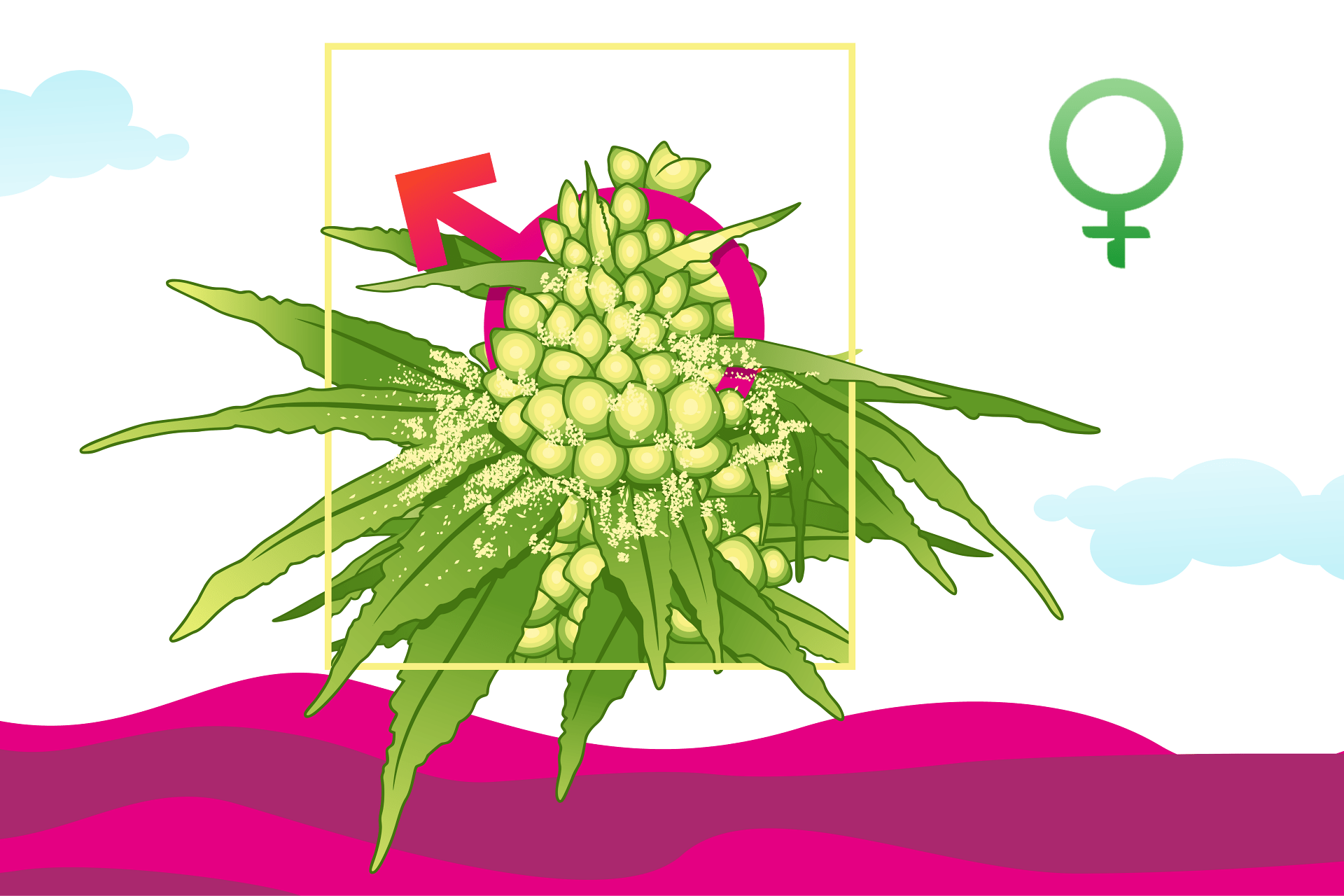
- Hemp Farming
-
by gu
THC and the evolution of cannabis go hand-in-hand. For many years, THC has served an essential role in both plant and human health. But why does cannabis produce THC, and what can we expect about the future of THC and cannabis?
THC and the Evolution of Cannabis: Why Does Cannabis Produce THC?
Though we don’t know precisely why cannabis produces THC, there are a few interesting theories. The first suggests that the effects of THC help deter pests from munching on the leaves. Many plants produce poisons or allelochemicals that affect the growth, behavior, and survival of those who consume them. This defense mechanism helps deter pests from eating the plants so they can survive and thrive for generations to come. Sometimes, pests (or people in our case) learn to adapt and possibly benefit from these allelochemicals—more on that in a bit.
Another theory is that THC’s antimicrobial properties help protect the plants from germs and disease. Like humans, plants can become infected with pathogens, but unlike humans, they lack an immune system to combat them. Instead, many plants produce chemicals to protect them from contamination. Some suggest that this theory is false because pests are still attracted to cannabis (anyone combatting a pest problem can attest to this). However, others insist that it only serves to protect the plant from specific pests.
The third theory about why cannabis produces THC is to protect the plant from harsh UV rays. THC and other cannabinoids like CBD and CBG develop in the tiny trichome glands that cover the flower surface. Research shows an increased trichome production in areas with intense UV penetration or otherwise harsh conditions. Hemp farmers should protect against excessive UV light as much as possible to avoid THC spikes in hemp crops.
THC in Modern Marijuana
There is one primary reason that modern marijuana contains such high THC levels compared to yesteryear: people love a nice THC buzz. For years, breeders have carefully selected cannabis strains with high THC levels to cross-breed with other favorable strains. This breeding technique is why we have fire strains like Copper Chem and Valley Chem. With THC levels of 20 percent or more, breeders create these cannabis strains for their kick, and consumers eat it right up.
Regarding THC and the evolution of cannabis, today’s marijuana is significantly more potent than it was in the past. This is in part due to better breeding techniques but also due to better growing, trimming, and curing practices, as well. For example, one study found that with the increase in cannabis potency also came a rise in sensimillia production. Sensimillia, or premium, seedless weed, is notoriously more potent than traditional “schwag” or low-grade, poorly trimmed product. By trimming away less potent parts of the flower and controlling for seed production, growers were producing more potent cannabis products which, of course, meant higher THC concentrations, as well. THC was quite the famous cannabinoid, and growers and breeders knew this. Hence, for many years, marijuana growth and development mainly focused on increasing THC levels.
Marijuana Breeders Turn to Hemp
Breeders have focused on increasing THC levels for years, but with new hemp legislation at play, many have turned their focus to CBD hemp seed production. These specially-designed plant strains produce the same potent flowers that marijuana seeds do but with minimal THC. Low THC hemp seeds are especially important for the hemp farming community as THC alone determines whether the plants grown are legally compliant “hemp” or federally-restricted “marijuana.”
Furthermore, experienced hemp seed breeders understand the importance – and thereby the potential for increased profit – of growing female-only hemp plants. CBD hemp seed breeders can control their seed genetics in such a way that removes all potential male plants from the gene pool. In doing, hemp farmers can grow feminized CBD hemp seeds with minimal THC while maintaining other significant cannabinoid levels. In other words, experienced cannabis seed breeders have a knack for producing the exact types of seeds that the market demands. Whether consumers seek high THC levels in their marijuana plants or low THC levels in their hemp plants, cannabis seed breeders are making it happen.
Final Thoughts About THC and the Evolution of Cannabis
As the primary psychoactive component in marijuana-type cannabis, THC interacts with our endocannabinoid system to exert many different psychological effects. Some of the primary effects of THC consumption include pain regulation, mood alteration, memory development and recollection, and appetite changes. But human consumption is not the primary reason cannabis produces THC. In fact, THC may be a valuable resource for protecting the growing cannabis plant.
Though THC and the evolution of cannabis have a long history, we are still writing its future. What kind of changes do you expect to see regarding THC and the evolution of cannabis?



J.D.
June 8, 2020 at 8:30 amHi Abby my name is J.D. I heard a theory about the evolution of THC it is a virus that Cannabis plants contracted in the prehistoric days when dinosaur’s were around, many other plants had caught the virus and couldn’t live or host it but then it met the Cannabis plants, Cannabis was the only plant that could host the THC virus and live an remain healthy so over time it became found only in Cannabis but to humans and animals it causes all different types of mental and physical effects but no harmful side affects or death. (Just something I was told a long time ago by an old farmer& grower up in the mountains) Just Saying????
Abby Hash
July 2, 2020 at 5:00 pmThat’s a very interesting theory, J.D. Thanks for sharing 🙂
Difference Between Cannabis, Hemp, Weed, and Marijuana
July 18, 2020 at 7:13 am“I know all these words have the same meaning and refer to some kind of plant.
Also, as far as I know, weed is the slang for marijuana or cannabis. (Correct me if I’m wrong).
What I do not understand is the difference between these words. Is cannabis a formal word, and marijuana and weed both informal?
Does one or two of these words originated from South America — for example, has a Spanish root — and the others originated from elsewhere?”
Abby Hash
July 18, 2020 at 12:14 pmExcellent question!
Both “hemp” and “marijuana” are common terms used for different types of Cannabis. In fact, the only distinction is the amount of THC in each; hemp refers to plants that produce no more than 0.03 percent THC on a dry weight basis, whereas “marijuana” refers to anything above that. The Agricultural Marketing Act of 1946 originally established this distinction and we continue to use it to avoid confusion and to parallel the language used most hemp legislation documents.
As for the origin of the word “marijuana,” that is a very complex subject with a some-what derogatory history. We’d love to delve more deeply into that discussion in a future blog, though. Stay tuned!